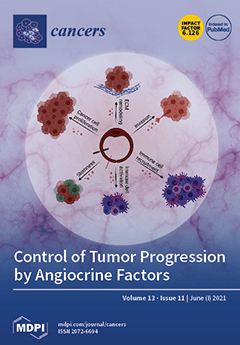Purpose: We prospectively evaluated the feasibility of SPECT-CT/planar organ dosimetry-based radiation dose escalation radioimmunotherapy in patients with recurrent non-Hodgkin’s lymphoma using the theranostic pair of
111In and
90Y anti-CD20 ibritumomab tiuxetan (Zevalin
®) at myeloablative radiation-absorbed doses with autologous stem cell support. We also assessed acute non-hematopoietic toxicity and early tumor response in this two-center outpatient study. Methods: 24 patients with CD20-positive relapsed or refractory rituximab-sensitive, low-grade, mantle cell, or diffuse large-cell NHL, with normal organ function, platelet counts > 75,000/mm
3, and <35% tumor involvement in the marrow were treated with Rituximab (375 mg/m
2) weekly for 4 consecutive weeks, then one dose of cyclophosphamide 2.5 g/m
2 with filgrastim 10 mcg/kg/day until stem cell collection. Of these, 18 patients with successful stem cell collection (at least 2 × 10
6 CD34 cells/kg) proceeded to RIT. A dosimetric administration of
111In ibritumomab tiuxetan (185 MBq) followed by five sequential quantitative planar and one SPECT/CT scan was used to determine predicted organ radiation-absorbed dose. Two weeks later,
90Y ibritumomab tiuxetan was administered in an outpatient setting at a cohort- and patient-specific predicted organ radiation-absorbed dose guided by a Continuous Response Assessment (CRM) methodology with the following cohorts for dose escalation: 14.8 MBq/kg, and targeted 18, 24, 28, and 30.5 Gy to the liver. Autologous stem cell infusion occurred when the estimated marrow radiation-absorbed dose rate was predicted to be <1 cGy/h. Feasibility, short-term toxicities, and tumor response were assessed. Results: Patient-specific hybrid SPECT/CT + planar organ dosimetry was feasible in all 18 cases and used to determine the patient-specific therapeutic dose and guide dose escalation (26.8 ± 7.3 MBq/kg (mean), 26.3 MBq/kg (median) of
90Y (range: 12.1–41.4 MBq/kg)) of ibritumomab tiuxetan that was required to deliver 10 Gy to the liver. Infused stem cells engrafted rapidly. The most common treatment-related toxicities were hematological and were reversible following stem cell infusion. No significant hepatotoxicity was seen. One patient died from probable treatment-related causes—pneumonia at day 27 post-transplant. One patient at dose level 18 Gy developed myelodysplastic syndrome (MDS), 4 patients required admission post-
90Y RIT for febrile neutropenia, 16/18 patients receiving
90Y ibritumomab tiuxetan (89%) responded to the therapy, with 13 CR (72%) and 3/18 PR (17%), at 60 days post-treatment. Two patients had progressive disease at sixty days. One patient was lost to follow-up. Median time to progression was estimated to be at least 13 months. MTD to the liver is greater than 28 Gy, but the MTD was not reached as the study was terminated due to unexpected discontinuation of availability of the therapeutic agent. Conclusions: Patient-specific outpatient
90Y ibritumomab tiuxetan RIT with myeloablative doses of RIT up to a targeted 30.5 Gy to the liver is feasible, guided by prospective SPECT/CT + planar imaging with the theranostic pair of
111In and
90Y anti-CD20, with outpatient autologous stem cell transplant support. Administered activity over 5 times the standard FDA-approved activity was well-tolerated. The non-hematopoietic MTD in this study exceeds 28 Gy to the liver. Initial tumor responses were common at all dose levels. This study supports the feasibility of organ dosimetry-driven patient-specific dose escalation in the treatment of NHL with stem cell transplant and provides additional information on the radiation tolerance of the normal liver to radiopharmaceutical therapy.
Full article






